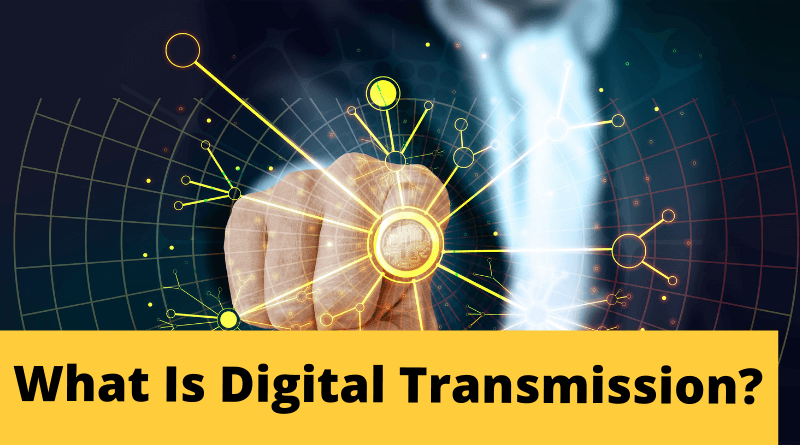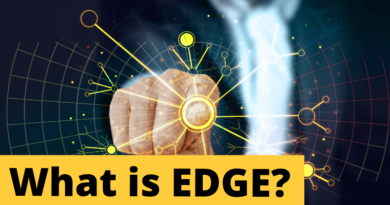What is Digital Transmission?
In this tutorial, we are going to see What is Digital Transmission?
Digital transmission is based on the transmission of information on the physical communication medium as a digital signal. Thus, analog data will have to be digitalized before being transmitted.
However, the digital information cannot circulate in the form of 0 and 1 directly, it is thus a question of coding them as a signal having two states, for example:
- two voltage levels with respect to the ground
- the voltage difference between two wires
- the presence/absence of power in a wire
- the presence/absence of light
- …
This transformation of the binary information into a signal with two states is carried out by the DCE, also called the baseband encoder.

Signal coding
For the transmission to be optimal, it is necessary that the signal is coded in order to facilitate its transmission on the physical medium. There are different coding systems that can be classified into two categories:
- The two-level coding: the signal can take only a strictly negative or strictly positive value (-X or +X, X representing a value of the physical quantity allowing to transport the signal)
- The three-level coding: the signal can take a strictly negative, null, or strictly positive value (-X, 0, or +X)
NRZ coding:
The NRZ coding (meaning No Return to Zero) is the first coding system because it is the most simple. It consists simply in transforming the 0 in -X and the 1 in +X, in this way we have a bipolar coding in which the signal is never null. As a result, the receiver can determine the presence or absence of a signal.
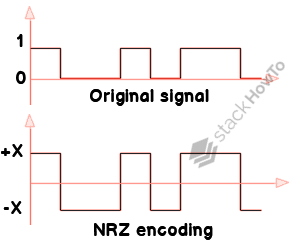
NRZI coding:
NRZI coding is slightly different from NRZ coding. With this coding, when the bit is 1, the signal changes state after the clock’s top. When the bit is 0, the signal does not change state.
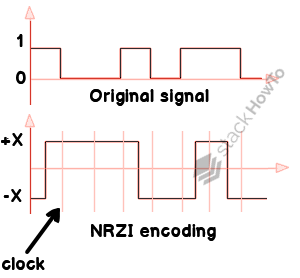
Manchester encoding:
Manchester coding, also called biphase coding or PE (for Phase Encode), introduces a transition in the middle of each interval. It consists in fact of an exclusive OR (XOR) between the signal and the clock signal, which results in a rising edge when the bit is zero, a falling edge otherwise.
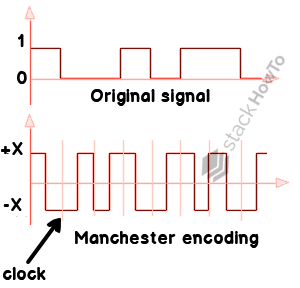
Manchester encoding has many advantages, including:
- the non-zero transition, making it possible for the receiver to detect a signal
- a spectrum occupying a large band

